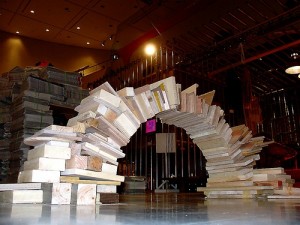It’s well worth reading and contemplating: the UKOU’s third in the annual series of reports, Innovating Pedagogy, 2014 edition. The pattern continues: useful short summaries of 10 emerging innovations that may have at least significant, if not profound, effects on teaching, learning and assessment. And as with the first two reports, some of the innovations I was familiar with (Flipped classroom), or at least heard of, while others are new to me (Bricolage).
 Overall, the list contains a pleasant preponderance of new approaches to perennial issues (excuse the exaggerated alliteration – can’t help myself). The primary example is ‘Learning to learn’, something constantly central to our hearts as educators. The focus is self-determined learning, which
Overall, the list contains a pleasant preponderance of new approaches to perennial issues (excuse the exaggerated alliteration – can’t help myself). The primary example is ‘Learning to learn’, something constantly central to our hearts as educators. The focus is self-determined learning, which
involves learning how to be an effective learner, and having the confidence to manage our own learning processes. ‘Double-loop learning’ is central to this process, for double-loop learners not only work out how to solve a problem or reach a goal, but also reflect on that process as a whole, questioning assumptions and considering how to become more effective.
Other well known pedagogic challenges include ‘Dynamic assessment’ (personalised and timely), ‘Learning through storytelling’ and ‘Threshold concepts’ (learning troublesome and tricky topics).
New angles on previously discussed topics are presented, these being ‘Massive open social learning’ (yes, an iteration of MOOCs) and an application of learning analytics, ‘Learning design informed by analytics’.
An interesting one is ‘Bring your own devices’, whereby teachers can harness the power of their students’ smartphones, tablets and laptops. Not surprisingly, the discussion includes headings of ‘Teacher control’ and ‘Challenges’!
And ‘Bricolage’? Most of us have at least a vague notion of what it means: essentially putting something together from whatever comes to hand. The report describes two applications with respect to pedagogy:
- “The first refers to the ways in which people learn by improvising around materials. … Students of art and drama learn the skills of improvisation with found materials and their own bodies. To combine these in productive ways to produce a deliberate effect is the creativity of bricolage … Through bricolage both the learner and the materials are transformed
- The second use of the term in education relates to engaging in innovation by creative exploration of the practices and technologies needed to achieve an educational goal.”
The section appears to be strongly based on a recent contribution from Scanlon et al. (2014 – see report for detail) and includes a useful figure explaining the role of bricolage in innovation extracted from the article. And a quick search revealed that there’s a Bricolage Academy of New Orleans!
Enough from me – if you’re not convinced to read it by now then it’s not going to happen!
photo credit: muzina_shanghai via photopin cc
